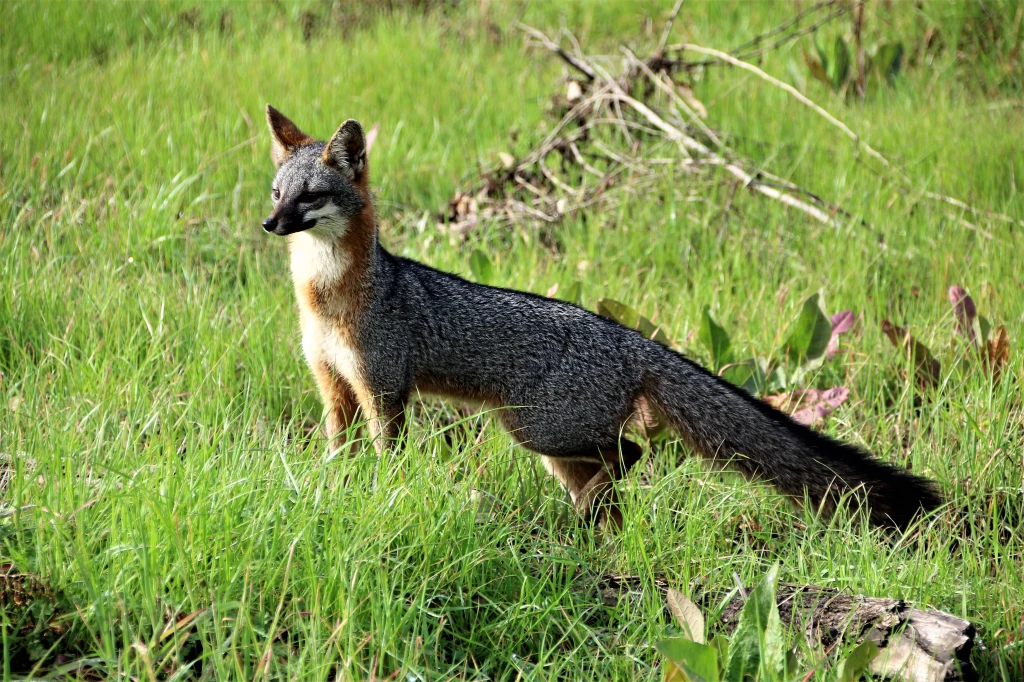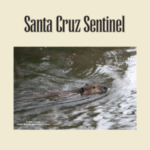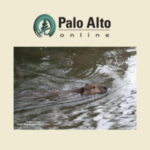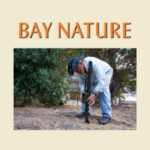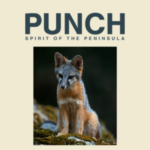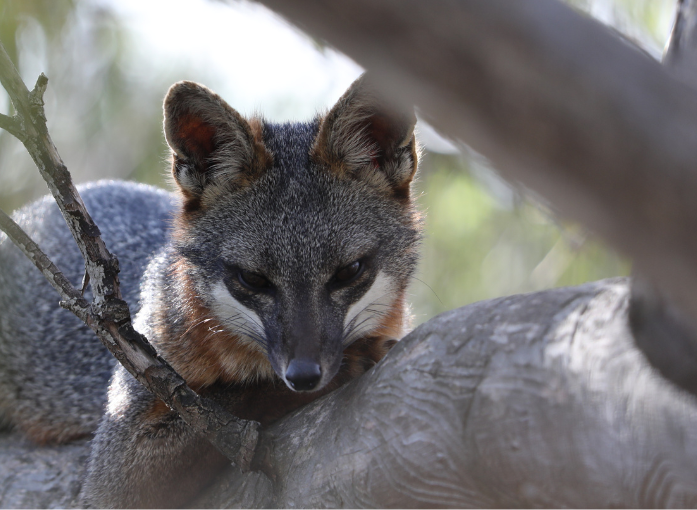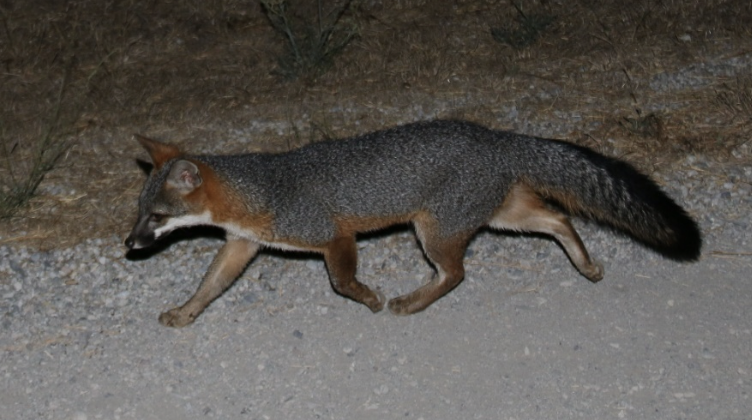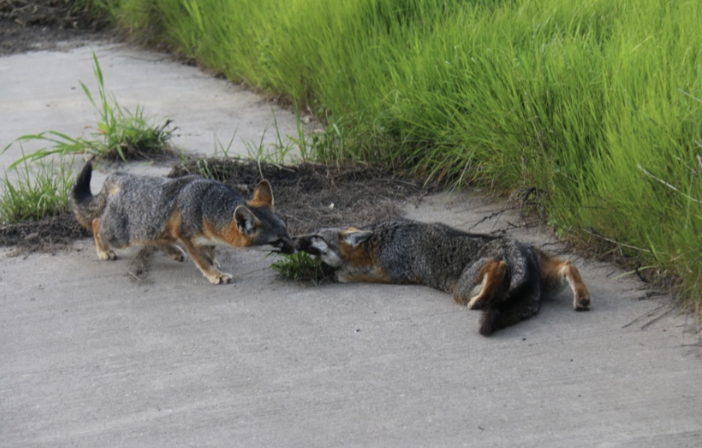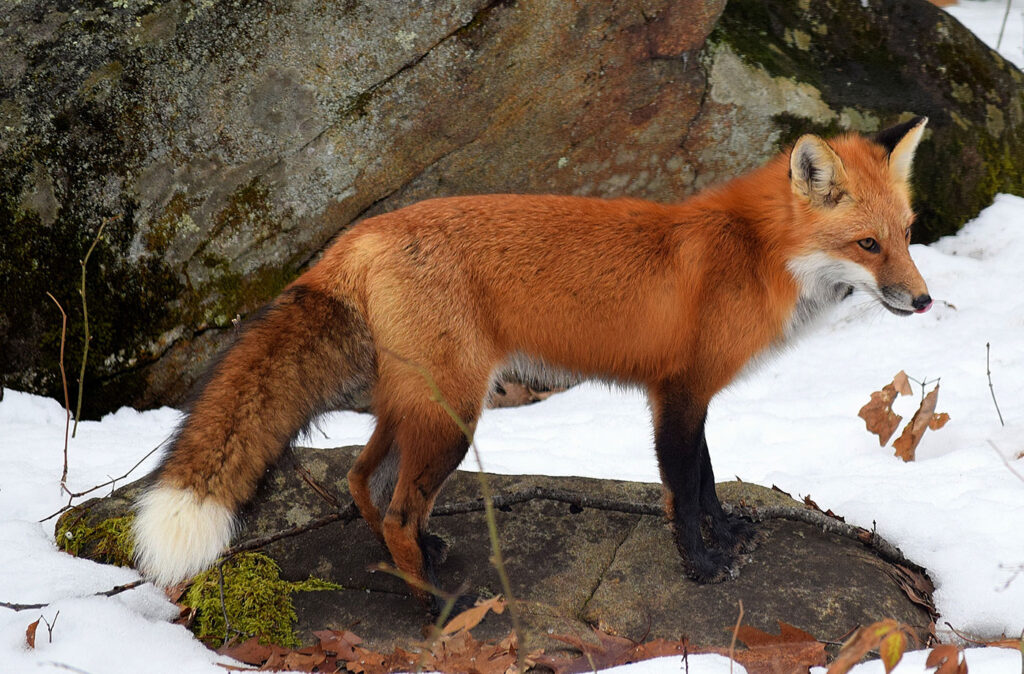Laimos: Elegance on All Fours
by William C. Leikam
President, CEO & Co-founder, Urban Wildlife Research Project
Tuesday November 21st, 2023, I checked for the foxes at the date palm tree and then again from off the top of the ramp. Down the ramp, one of the foxes jumped from off the retaining wall on the left and began to go down into the channel. I called, “Hey little fox,” and I supposed it to be “Big Eyes.” The fox stopped and then came trotting up the ramp. It was Big Eyes. I chattered at her for a bit, then went to swap SD cards in camera #11. She sat off to my right and back a bit. Once I’d finished, she went onto Pond Road where she urine marked. She seemed tense and a bit skittish but I didn’t think too much of it just then.
I walked down the ramp and at about two thirds of the way down, I turned around and checked to see if she was still there. She hadn’t followed me and no eyes glowed from my headlight in the early morning at the top of the ramp. I turned and as I looked ahead, there was something at the bottom of the ramp. I thought that it might just be some remnants of tree cutting because Valley Water had been cutting brush along the creek.
As I drew closer, however, I suddenly realized that Laimos lay there; sprawled out, his final throws before life dissolved. I cried, “No, no Laimos, old fox. Oh, my god! Damned, damned, dammed. Why?” and deep in my gut I boiled with grief. Tears slid down my cheeks because Laimos once knew me as I knew him. His legs must have kicked and trembled and that motion piled grass around his front paws. It could also have been his last attempt to cover himself before he died. Gray foxes do that when they die.
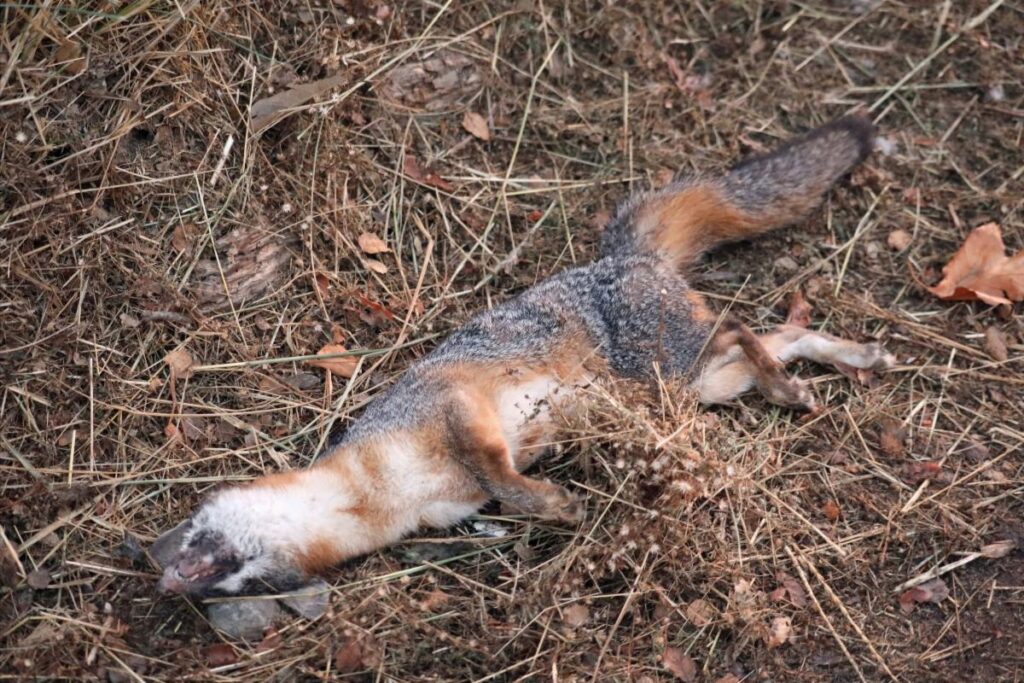
I collected myself, took several photos of him and did the only thing I could at that moment. I leaned down and petted him, stroked his wet fur and then I lifted his head to see his half-closed eyes. I wanted to see if he had that tell-tale sign of canine distemper, an oozing puss-like discharge from his eyes. His eyes were clear. I stood and said, “Good bye, good bye old Laimos, my friend. You were a wonderful fox.”
As I walked away, I checked the time: 6:35 AM. I remembered how smoothly and swiftly he moved along the channel and how when he went on over the crossing tree he did so with an elegant run up the tree and over the creek. When he moved it looked as if he was being propelled by something other. He moved with an elegant gait. I remembered the times when he and Big Eyes met and they gave each other fox kisses and how they loved to run and chase each other. He’d sometimes snap a run after her and then she’d turn the tide and run after him. I remembered the photos and videos we have of the two of them standing on their hind legs hugging each other. (Caution, that does not mean the same as when two people hug. We are aware of our propensity to project ourselves onto their behavior.) Those two gray foxes truly loved one another.
I wondered about Big Eyes when she jumped from off the retaining wall. She must have been holding a kind of vigil for her mate, maybe hoping that he would rise and continue. I’ll bet that she came to him lying there, maybe even before he took his last breath, or when she finally understood that he would never rise again, for not a muscle in his body even twitched. She may have gone to him and given him one of their special fox-kisses.
I can imagine all sorts of moments she had with him in those last moments when their lives cascaded into memory.
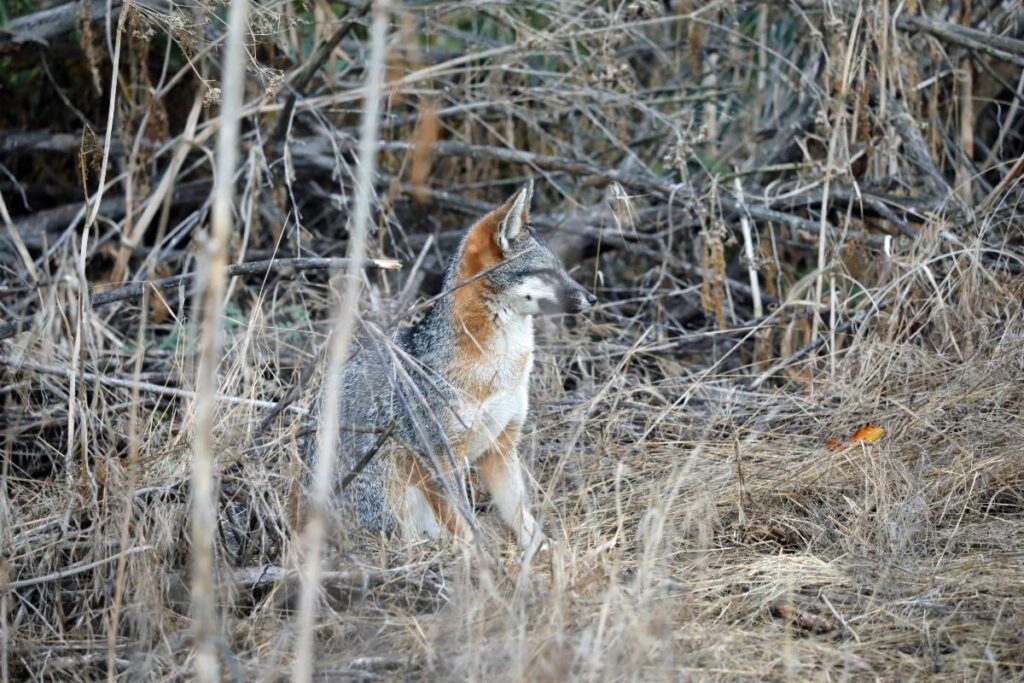
On my way back out of the overflow channel, I moved Laimos body from where he lay so that if Valley Water came in, they would not run over him. I put him on the retaining wall just about where she had held vigil. It hit me just then: Big Eyes had been sitting on the retaining wall when I came along. She must have known and was guarding him. She didn’t want to leave him.
People ask, “Why did he die?”
Testing, a necropsy at the University of Davis labs suggests, but this is not firm, that it is canine distemper. If so, that has implications for Big Eyes.
I. Gray Fox Population & General Health
As of this date, we have one adult gray fox living in the Palo Alto Baylands Nature Preserve.
Gray fox Big Eyes appears to be handling the death of her mate Laimos rather well, although she has become markedly more skittish.
II. UWRP News & Updates
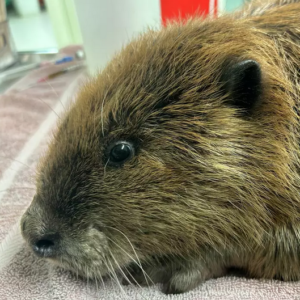
SF Gate: Beaver rescued from Bay Area creek
Earlier this week, one of the Matadero Creek beavers we’ve been monitoring was rescued by Palo Alto Animal Control after getting caught in a narrow, paved-over portion of the waterway. Read more at SF Gate.
Today, Bill is the world’s leading authority on the gray fox. This book is an account of his experiences among the gray foxes of the Baylands, a tale of life and death, of growth and loss. Stay for a while and go exploring with the Fox Guy. Find it today at Barnes & Noble or DiAngelo Publications.
 The ‘Triggered By Motion’ Experience
The ‘Triggered By Motion’ Experience
The UWRP is excited to present our newest video documentary featuring Bill Leikam’s participation in the global research project “Triggered By Motion”, a world-wide exhibit of citizen scientists from 21 locations using camera traps to learn about local urban wildlife. Join Bill on his journey between California and Zürich, Switzerland, as he experiences the breathtaking exhibition in person!
Read more about UWRP in the news:
III. UWRP Research Objectives
Within the permit that allows the Urban Wildlife Research Project to conduct its study of the behavior of the gray fox at the Palo Alto Baylands Nature Preserve, the objectives covered area:
Monitoring of urban gray fox denning sites in Palo Alto Baylands: This is being accomplished during the period when the gray foxes use a den site. It is one of the prime locations for gathering most of the behavioral data of the litter and for adults alike.
Assessment of status and population trends of Baylands urban gray foxes: Since January 2019 a pair of resident gray foxes have claimed territory at the Palo Alto Baylands Nature Preserve.
Identification of habitat features that promote the presence of urban gray foxes: After considering this and talking with people who know how to restore habitats, we need to assess what kinds of plants, including the Alkaline Saltbush, would grow best along the edge of the saltwater channel and alongside the marsh. We need to grow a permanent habitat that contains the corridors and plant it as soon as possible. We’ll keep an eye on this as this is a critical link between the southern region of the Baylands and the northern region.
Assessment of reproductive success and identification of factors that promote successful reproduction: Open the pinch-point along Matadero Creek by developing thickets that link one area to another, instead of the present “islands”.
Identification and assessment of possible dispersal travel routes: Dispersal routes move between the Palo Alto Baylands Nature Preserve and the Shoreline region over in Mountain View. In a north-westerly direction the dispersal corridors run just behind the homes bordering the marshlands.

